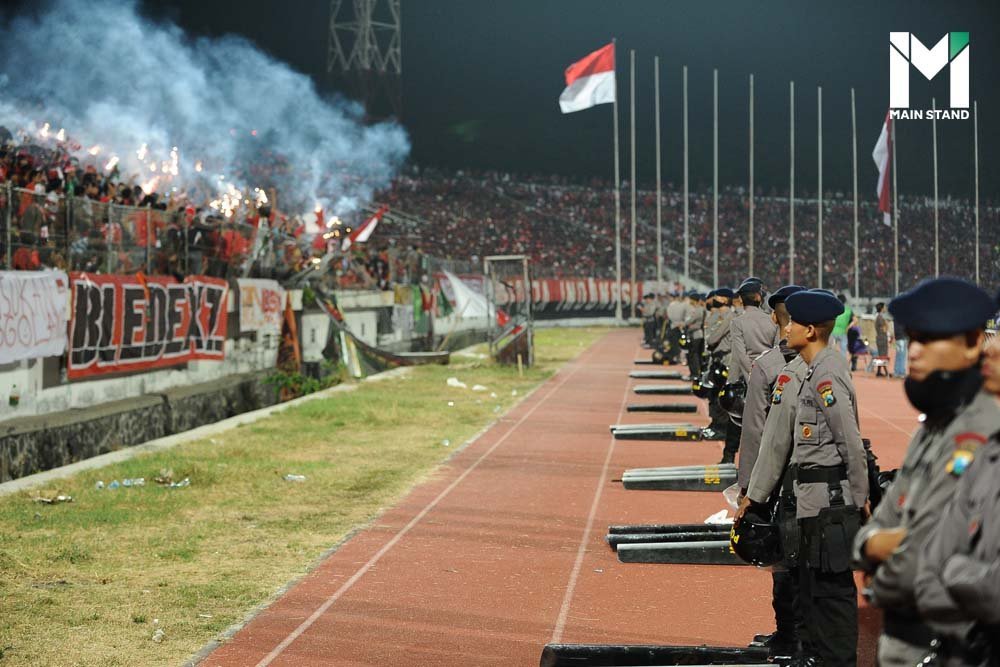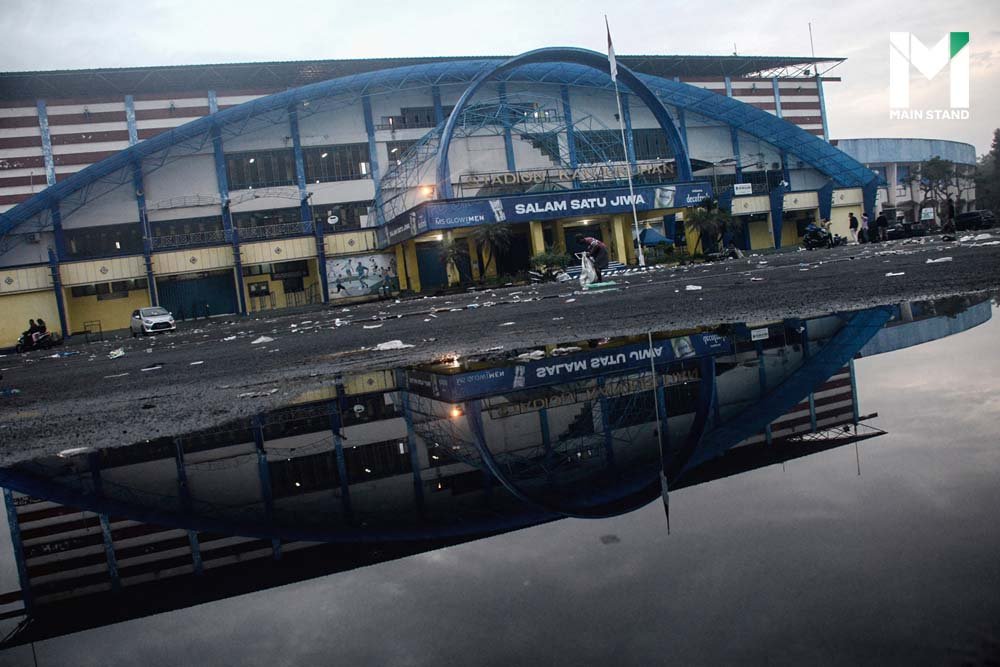
Violent fan groups have long been a hallmark of Indonesian football, and on October 1, 2022, it reached a point of no return.
Scenes of violence, abuse of tear gas, and a deadly stampede erupted right after the final whistle in East Java, which saw ladies and children killed following Arema FC's 3-2 defeat against arch-rivals Persebaya Surabaya.
Why was the riot between Arema FC fans and authorities so tense that the number of deaths was over 125? Let's dig deeper into what's behind such tragic aftermath with Main Stand.
The risk factors involved in the fight
Although Indonesia is a country with the most populous Muslim majority, various religions co-exist. Aside from Islam, Christianity, Hinduism, and different syncretic belief systems spread throughout the Archipelago.
Football is considered a severe topic in Indonesia, akin to politics and religion. Therefore, like the former two topics, negative connotations can lead to confrontation about football.

Indonesian football fans are known to be passionate about their football team, just like the British. So it may be safe to say they call football their religion.
The island nation is also considered one of the world's football-craziest countries. So in 1994, when the professional league was established, it gained popularity at an accelerated rate.
The testament to Indonesia's mania for football is 21 stadiums with a seating capacity of over 30,000 and four high-capacity stadiums which support over 50,000 spectators.

Indonesian people's football fanaticism goes beyond enjoying football games. As all 37 Indonesian states are authorized to administer their province, they differ in beliefs, ideas, and historical backgrounds.
With this, they are belligerent to each other in football. It explains the football violence and hatred all along. Football is not only a sport.

"In Thailand, people were crazy about teams such as Muangthong or Port. However, compared to Indonesia, it was in an even more frantic state. Indonesian people are more passionate than Thais with their local football," said former Thai national footballer Suchao Nuchnum, who once played in the Indonesian league.
The above statement explains why a clash like the one between the Arema FC fans and authorities could happen. Although sadly, it may be a common occurrence in Indonesia, the tragic past envisions what could happen in the future if these conflicts continue.
The Super East Java Derby
This fixture got its name, the Super East Java Derby, because, like many other fixtures worldwide, Arema FC and Persebaya Surabaya are long-time rivals.

There have long been friction and clashes outside the stadium between both sides' supporters. For this reason, police officers were all set at the Kanjuruhan Stadium in Malang, East Java, even before the game kicked off.
The stadium has a seating capacity of 38,000. However, with past rivalries and clashes between the two team's supporters, the authorities banned the away team's fans from attending the stadium to avoid brawls.
The home fans packed the stadium, and the number of spectators was 42,000, surpassing the maximum seating capacity of 38,000.
After 90 minutes, Persebaya Surabaya won the match 3-2, prompting thousands of Arema FC fans to enter the field of play from the stands. This led to local police and the Indonesian National Armed Forces moving to enforce security, with players of Persebaya escorted off the field of play and to safety.

Local media reported that skirmishes broke out between the security forces and the fans on the pitch, with objects thrown before security officers began using tear gas.
The tear gas was said to have resulted in panic among fans as they attempted to escape the gas. In doing so, many fell to the ground and were inadvertently trampled on. The riot just went beyond comprehension. To crack down on the fights and scuffles, the officers needed to use batons to beat those attempting to hurt them.

The authorities also had to fire tear gas to disperse the crowd, prompting the fans to surge toward the stadium's exit gate. As the number of spectators was high, many were crushed and suffocated to death, with countless injuries.
This incident is the second-deadliest stadium disaster in football history.
May this be the last time
Upon investigation, the Football Association of Indonesia (PSSI) stated that 3,000 hooligans initiated the violence. However, the association ordered a ban on Arema FC from hosting football matches until the end of the season.
Also, the Human Rights group Amnesty International confirmed that the violence came from the use of tear gas on the protestors. (According to FIFA's rules, tear gas and guns are banned during games.)

Amnesty International demanded the government investigate this matter to consider whether the police officers' response, which amounted to the "use of excessive force" to control an unarmed crowd, is justified.
This also became national football-related violence when Joko Widodo (Jokowi), President of Indonesia, ordered the thorough examination and suspension of the premier football league games until a match safety measure was in place. He also called for tighter security in stadiums.
President Jokowi revealed that he would address this problem and confirmed that this tragedy would be the last tragedy of football in Indonesia.

Although it is too late because over 170 lives have perished, the Indonesian government should learn from the violence and start giving more importance to domestic football. However, this is a decade-long conflict, and tight safety measures alone may not end the problem. Tackling hooliganism should be a priority.
If the cause is left unaddressed, there will be adverse consequences, unavoidably.
Sources:
https://www.abc.net.au/news/2019-02-12/indonesia-football-culture-has-killed-74-fans/10794186
https://www.bbc.com/thai/articles/cv2e238rnzeo
https://www.sportsnet.ca/soccer/article/explainer-whats-behind-indonesias-deadly-soccer-match/
https://www.aljazeera.com/news/2022/10/2/timeline-how-did-indonesias-deadly-soccer-match-unfold
https://thesefootballtimes.co/2019/02/07/the-chaotic-world-of-indonesias-violent-ultras/
https://happeningandfriends.com/article-detail/165?lang=th






